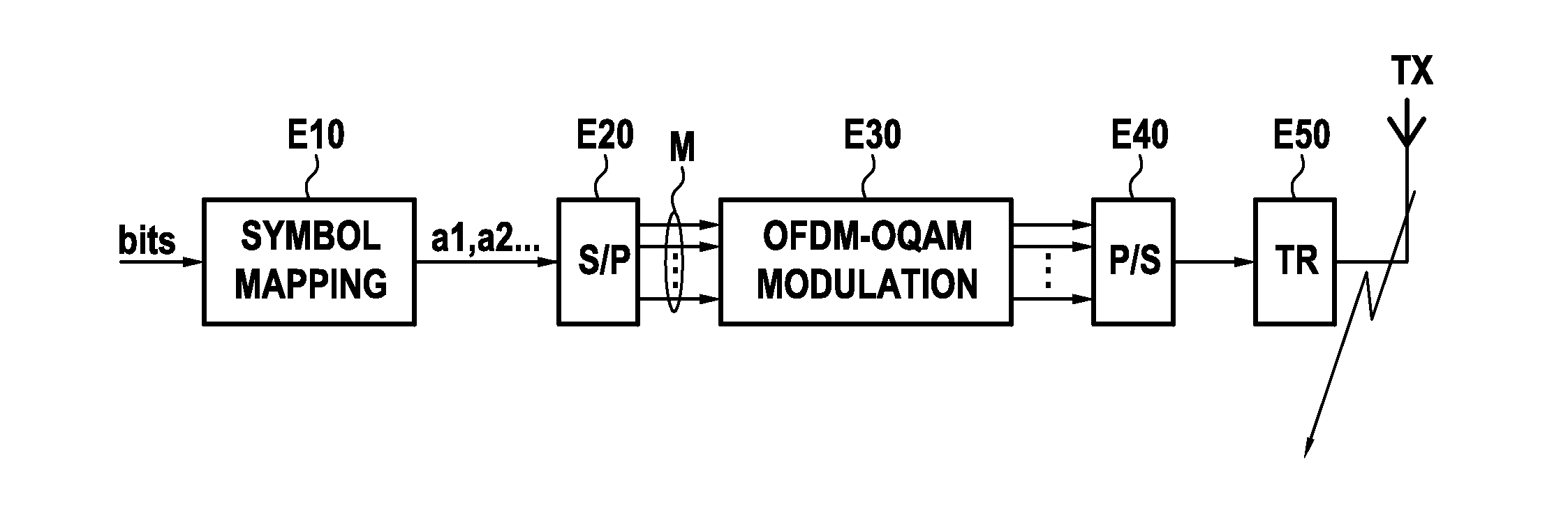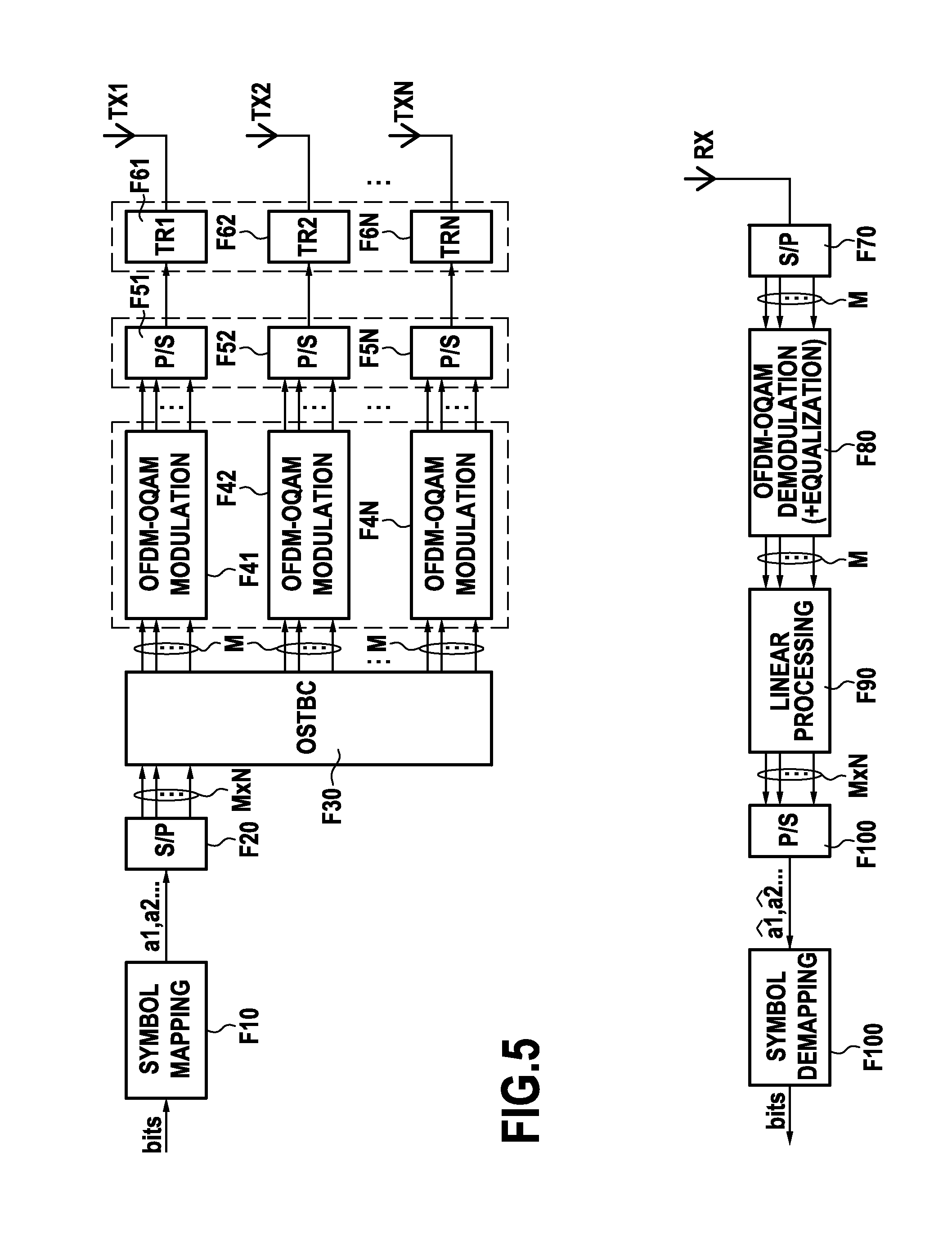Method for transmitting at least one multi-carrier signal consisting of ofdm-oqam symbols
a multi-carrier signal and symbol technology, applied in the field of digital signal transmission, can solve the problems of increasing spectrum efficiency loss, affecting the transmission of digital signals, and producing imaginary intrinsic interference terms, etc., to achieve maximum spectrum efficiency, reduce the rate, and avoid loss
- Summary
- Abstract
- Description
- Claims
- Application Information
AI Technical Summary
Benefits of technology
Problems solved by technology
Method used
Image
Examples
first embodiment
[0096]FIG. 2 shows a communications system 1 in accordance with the invention, in a
[0097]The communications system 1 is a SISO system having a transmit antenna TX and a receive antenna RX. In accordance with the invention, it comprises:[0098]a transmitter device 1A in accordance with the invention; and[0099]a receiver device 1B in accordance with the invention.
[0100]The transmitter and receiver devices 1A and 1B are separated by a transmission channel 2 that is assumed in this example to be frequency selective and made up of L complex paths distributed in a normal distribution. The complex coefficients of the transmission channel 2 are written h=(h0, h1, . . . , hL−1).
[0101]In this example, the transmitter device 1A has the hardware architecture of a computer. In particular, it comprises a control unit 3 having a processor, a random access memory (RAM) 4, a ROM 5, and communications means 6 including the transmit antenna TX. The communications means 6 are controlled by the control u...
second embodiment
[0133]A second embodiment is thus described below with reference to FIGS. 4 and 5 in which the time-reversal principle is applied in accordance with the invention to OFDM-OQAM modulation in the context of a MISO system using a real orthogonal space-time code with a coding rate of 1. The coding rate of a space-time (or space-frequency) code applied to N transmit antennas is defined as the ratio of the number of useful symbols over the number of symbol durations needed to transmit them.
[0134]FIG. 4 shows a MISO communications system 1′ in accordance with the invention in a second embodiment.
[0135]In accordance with the invention, the communications system 1′ comprises:[0136]a transmitter device 1A′ in accordance with the invention and having N transmit antennas TX1, TX2, . . . , TXN; and[0137]a receiver device 1B′ in accordance with the invention and fitted with a single receive antenna RX.
[0138]The transmitter and receiver devices 1A′ and 1B′ are separated by a transmission channel 2...
PUM
 Login to View More
Login to View More Abstract
Description
Claims
Application Information
 Login to View More
Login to View More - R&D
- Intellectual Property
- Life Sciences
- Materials
- Tech Scout
- Unparalleled Data Quality
- Higher Quality Content
- 60% Fewer Hallucinations
Browse by: Latest US Patents, China's latest patents, Technical Efficacy Thesaurus, Application Domain, Technology Topic, Popular Technical Reports.
© 2025 PatSnap. All rights reserved.Legal|Privacy policy|Modern Slavery Act Transparency Statement|Sitemap|About US| Contact US: help@patsnap.com



